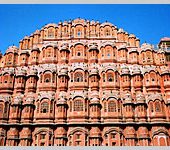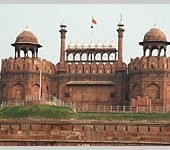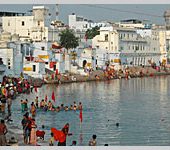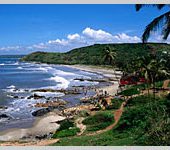Jodhpur is the second largest city in the Indian state of Rajasthan. Jodhpur, the Sun City, is located on the edge of the Thar Desert. Jodhpur is a popular tourist destination, featuring many beautiful palaces, forts and temples. We provide you the Complete Car and Taxi Rental service to do the City. Jodhpur is a popular tourist destination, featuring many beautiful palaces, forts and temples. The city is known as the Sun City for the bright, sunny weather it enjoys all year.
Jodhpur History
Rao Jodha founded Jodhpur in 1459. Jodhpur history revolves around the Rathore Clan. Rao Jodha, the chief of the Rathore clan, is recognized with the origin of Jodhpur in India. The city is named after him only. It was previously known as Marwar. The following paragraphs will tell you more about the past of Jodhpur, Rajasthan.
The Rathores were driven out of their original homeland, Kaunaj, by Afghans. They fled to Pali, near to the present day Jodhpur. Rathore Siahaji married the sister of a local prince. This helped the Rathores to establish and strengthen themselves in this region. In some time they ousted the Pratiharas of Mandore, just 9 km of today’s Jodhpur. Initially, Mandore served as their capital, but, by 1459, Rathores felt a need for a secure capital. This lead to the formation of Jodhpur, the Sun City, by Rao Jodha.
The Rathores enjoyed good relations with all the Mughals, except Aurangzeb. Maharaja Jaswant Singh even supported Shahjahan in his struggle for succession. After Aurangzeb’s death, Maharaja Ajit Singh drove out Mughals from Ajmer and added it to Marwar (now Jodhpur). Under the reign of Maharaja Umed Singh, Jodhpur grew into a fine modern city. During the British Raj, the state of Jodhpur was the largest in Rajputana, by land area. Jodhpur prospered under the British Raj. Its merchants, the Marwaris, flourished endlessly. They came to occupy a dominant position in trade throughout India. In 1947 India became independent and the state merged into the union of India. Jodhpur became the second city of Rajasthan.
Pratap Singh Laid The Foundation of Modern Jodhpur. His status in Jodhpur is similar to the status of the other great leader of the region- Maharaja Ganga Singh of Bikaner. He laid the foundation of the modern state of Jodhpur, over which Umaid Singh who ruled from 1918-47 built upon. Among other things, Umaid was a pioneer in the field of aviation in India and he built one of the first airports in the country. His son Hanuwant Singh was a keen aviator as well but tragically died in an air crash at the age of 28. It was thanks to the efforts of these rulers that when Jodhpur became part of the Indian union after independence, it was not only Rajasthan’s biggest states, but also its most modern.
General Information
Area:78.6 km2 (30.3 sq mi)624.5 km2 (241.1 sq mi)
Altitude: 554ft above sea level
Climet: rose up to 53.2 degrees Celsius
Languges: Hindi Marwari, Rajasthani, English, Sindhi
What To See
- Mehrangarh Fort
- Jaswant Thada
- Umaid Bhawan Palace
- Ghanta Ghar
- Chamunda Mata Temple
- Raj Ranchhodji Temple
- Siddhanth Shiv Temple
- Ganesh Temple
- Kunj Bihari Temple
- Osian mata temple
- Chamunda Mata Temple
- Mandore Gardens
Architecture
The city of Jodhpur prospered because of its location on the strategic Delhi – Gujarat trading route. This imperial city confirm with tales of ancient times in the emptiness of the desert. Regarding the Jodhpur culture, the Jodhpuri people are amongst the most hospitable people of India. They have a typical Marwari accent. The lifestyle in Jodhpur, India is quite fascinating. The folks there wear nice and lovely multihued costumes. The women folk wear wide gathered skirts and a hip length jacket, with three quarter length sleeves, covering the front and back.
Women are also love to wear jewelry on many parts of their body. They particularly like to wear specific type of jewelry like the ones worn on the feet, head, forehead, ear, nose, neck, arms, wrist, fingers, waist, etc. Another one of the unique features of the culture of Jodhpur, Rajasthan is the colorful turbans worn by men. The popular tight, horse riding trousers, ‘Jodhpurs’, took their name from this city only. The main languages spoken here are Hindi, Marwari and Rajasthani. Lending a romantic aura to Jodhpur, are its exquisite handicrafts, folk dances, folk music and the brightly attired people. The desert people are quite friendly. With their sweet smiles and warm hospitality, they win the hearts of the tourists.
The famous Marwar festival brings out the festive spirits of the people of this city. The famous Ghoomar dance, Jodhpur’s popular dance derives its name from ghoomna, the pirouetting which displays the spectacular colours of the flowing ghagra, the long, skirt of the Marwari women. Music and dances are such an essential part of tribal life that professional musicians and dancers are redundant. Their dances are generally accompanied by the beats of the mandal, chang and a variety of other musical instruments, which provides a lively rhythm to their dance sequences. Thus, this is the inspiring culture of the city Jodhpur.








